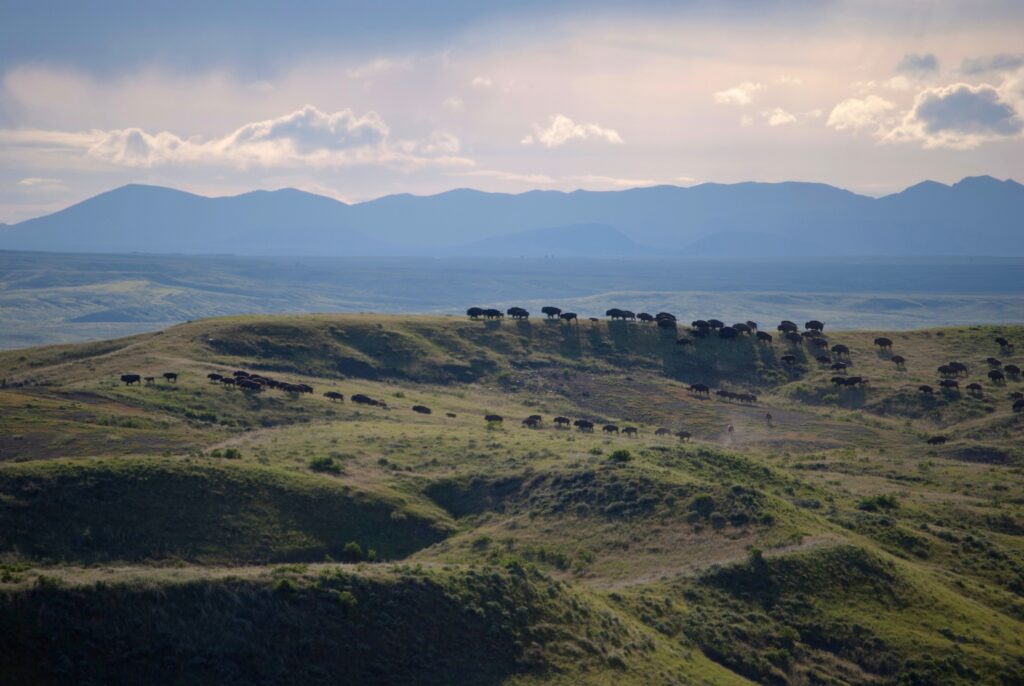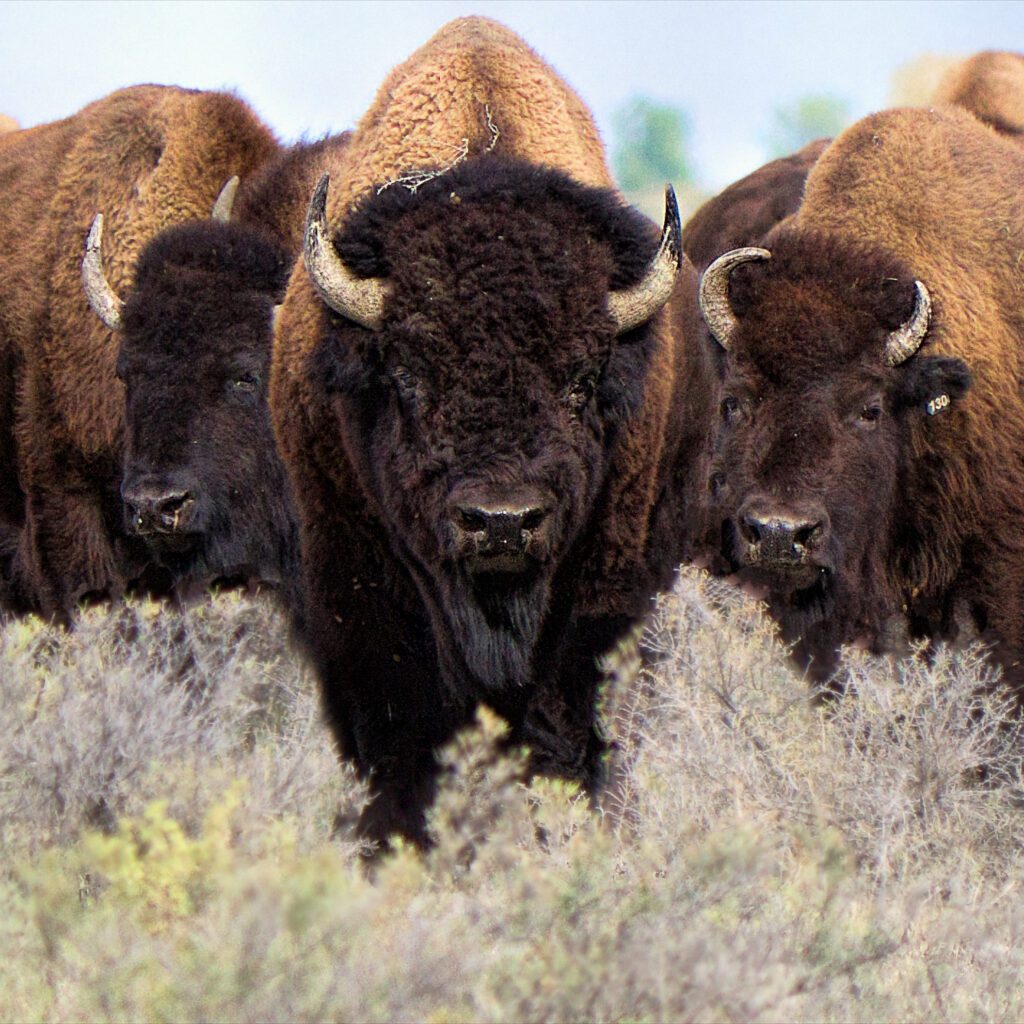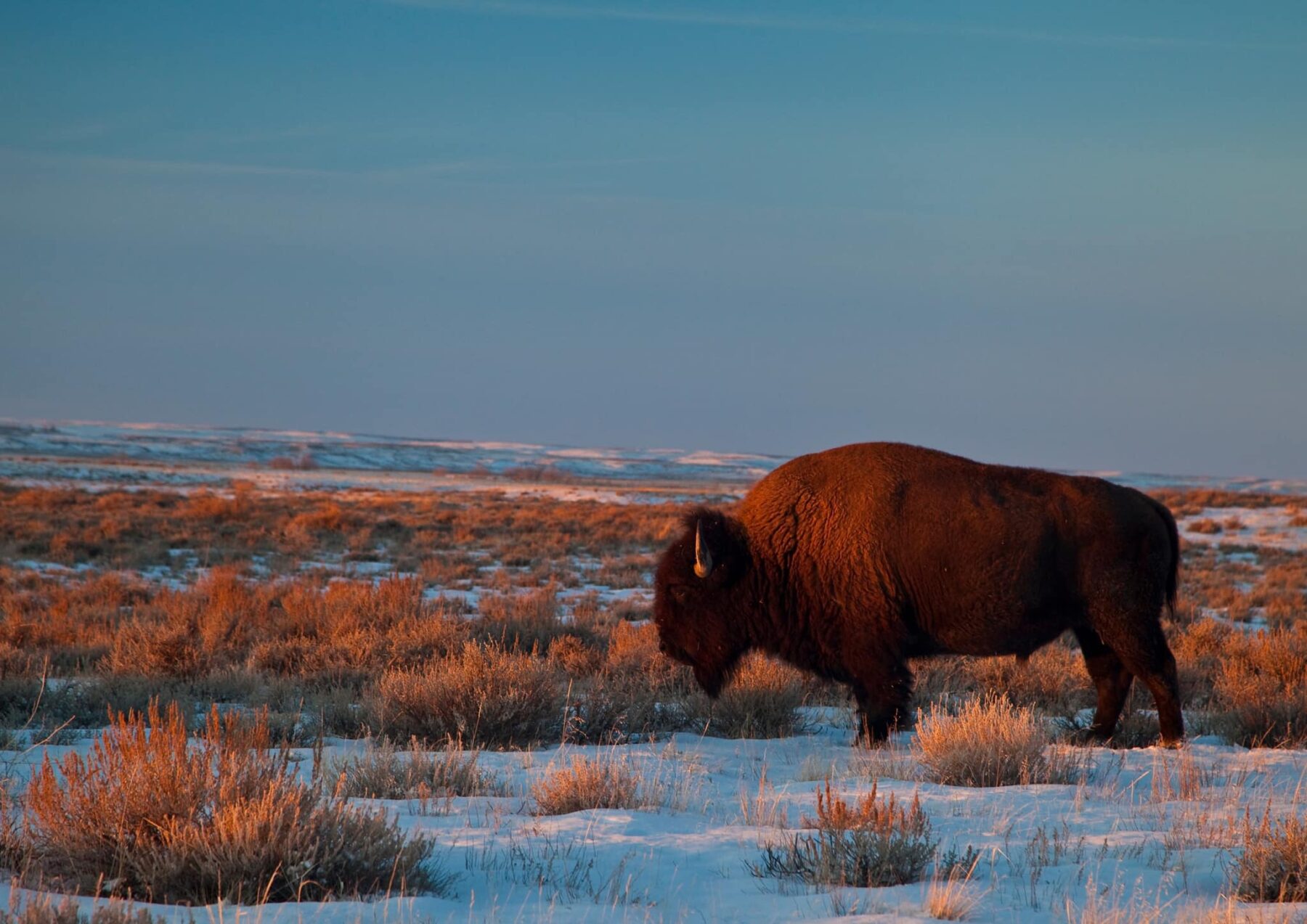More than a century ago, millions of bison grazed across America’s Great Plains. Now considered “ecologically extinct” by scientists because the large mammals no longer roam in herds and perform their ecological role on the prairie, bison have proven exceedingly difficult to save. This is partially because the animals need a massive, open-grasslands ecosystem to thrive. Many may not know about Bison’s positive effect on countless other species native to the prairies.
Since 2001, the nonprofit American Prairie has been working to restore a functioning prairie full of herds of bison. The group’s mission is to create one of the largest natural reserves in the U.S., a refuge forever for wildlife and people. American Prairie introduced its first bison to its lands in 2005.
“When you have large numbers on the landscape, they impact everything,” said Scott Heidebrink, American Prairie’s director of bison restoration, in an interview in The New York Times. “There are ways that bison were impacting the landscape that we haven’t even thought about.”

The nonprofit’s mission is based on a research paper called the Vermejo Statement that posits at least 5,000 bison must be able to roam freely on 450,000 fence-free acres of land to restore a functioning prairie.
The statement has been backed up by long-term studies in Kansas that indicate three decades of bison grazing on soil doubles the richness of native plant species compared to cattle using the same lands.
This means the entire ecosystem becomes drought-resistant, leaving more nutrient-rich forage for the ecosystem to thrive. This cascades to the health of deer and birds, which work in tandem with the bison to keep the land healthy. Vibrant grasslands are also powerful agents of carbon sequestration.
Essentially, bison are ecosystem engineers. They naturally improve their environment and, by doing so, enhance the habitat of plants, insects, birds, and other mammals. And when bison die, their decomposing bodies feed various species and release potassium, nitrogen, and other vital grassland nutrients.

With these fragile grasslands considered the least-protected biome on the planet, it’s imperative that the four places left in the world that can be preserved are. One of those places is Montana.
In many states, including Montana, current smaller herds of bison are considered livestock and, like cattle, are given a limited pasture to graze. This practice prevents the natural ecosystem from restoring itself and contributes to the ongoing deterioration of grassland soils and habitats. The battle over bison roaming is complicated, leading straight to the heads of the Bureau of Land Management and Congress, where it is hotly debated whether or not bison freedom would negatively impact cattle herds, which are used to feed the nation.
American Prairie’s herd remains on its land, and any extra bison are donated to neighboring Native reservations.
The goal is to create a 3.2 million-acre reserve where 6,000 bison can live, covering private and public land, to restore the heritage of an iconic animal and ecosystem that once symbolized the American spirit.

To achieve this goal, the organization announced the purchase of three pieces of land in 2022, adding 3,412 acres to its habitat base. According to a press release, the properties are all parts of private land located within or next to American Prairie-owned units.
Similarly, in March, the nonprofit announced the acquisition of “a wildlife and waterfowl rich property” in Phillips County. The press release said, “the 4,960-acre property comprises 3,075 deeded acres and 1,885 leased acres located south of Dodson, MT.” This buy will be called the Wild Horse unit, bringing American Prairie’s total property to more than 460,000 acres.
“It’s exciting to see American Prairie continue to grow each year,” said Alison Fox, CEO of American Prairie. “Properties like these may be smaller in size, but they are just as critical to creating a contiguous landscape where wildlife can move and thrive.”





